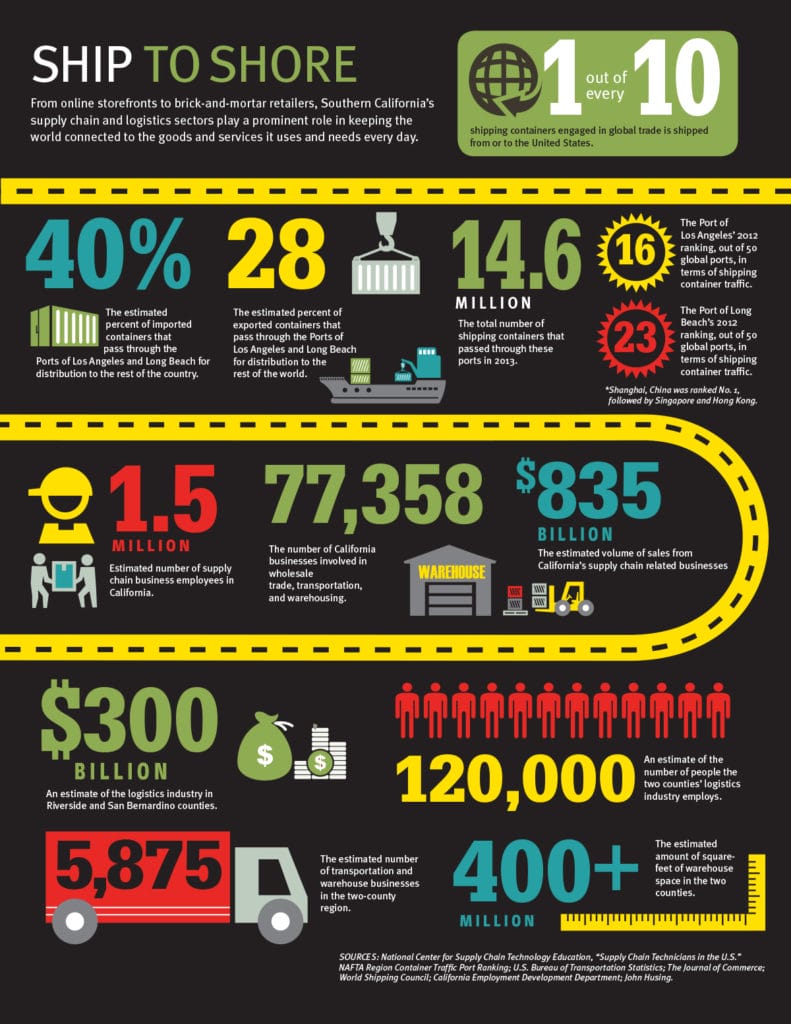The Drucker School Link in the Supply Chain
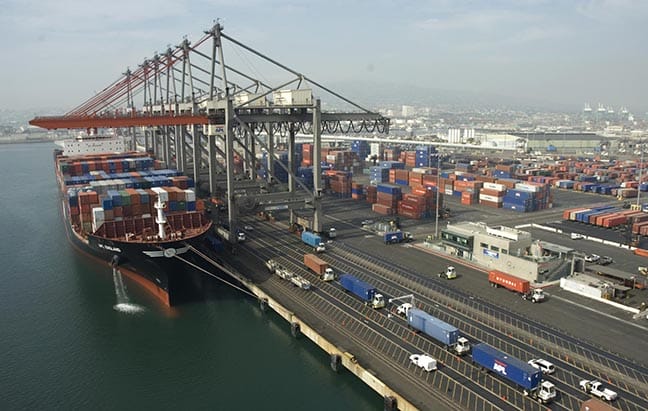
Like most of us, you may have bought something from Amazon or Zappos or any of the other online retail giants, joining millions of people in the United States alone who spent more than $263 billion online last year.
As easy as it was to click on “Buy Now” or “Go to Checkout,” getting that simple-looking box on your doorstep brought you into a highly complex and global process—you became part of the supply chain industry.
Supply chains touch our lives every day, everywhere. Virtually everything we purchase online or from store shelves undergoes numerous production, transportation, storage, and distribution processes: from suppliers to manufacturers; from distributors to retailers; from ships and planes to trucks and trains.
Southern California plays a critical and global role in the supply chain. Boasting the busiest container ports in the country and the largest hub of warehouse facilities, it is the nation’s trade gateway. It all starts with the millions of shipping containers coming in and out of the Ports of Los Angeles and Long Beach.
“Forty percent of all imported containers and 27 percent of all exported containers in 2013 came and went out of those two ports,” said Southern California economist John Husing. Husing is also a CGU alumnus (PhD, economics, 1971). “They are huge.”
Last year, a total of 14.6 million shipping containers passed through the ports.
Adding to the supply chain picture are two major international airports and thousands of miles of roadway and railroad tracks crossing the region. Riverside and San Bernardino counties—in cities such as Ontario, San Bernardino, Chino, Fontana, Jurupa Valley, and Moreno Valley—account for more than 400 million square feet of warehouse storage space and thousands of employees.
Now, the Peter F. Drucker & Masatoshi Ito Graduate School of Management is bringing its global management expertise to become a voice for Southern California’s supply chain and logistics community. With its unique management-as-a-liberal-art philosophy, expert faculty, innovative degree programs, and public-private collaborations, the Drucker School intends to play an important role in this vital industry that sits right at the university’s doorstep in Riverside and San Bernardino counties.
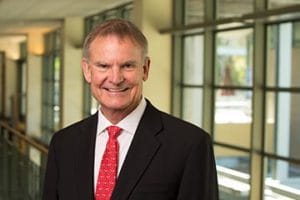
“Southern California’s supply chain is dynamic and calls for new perspectives for the industry,” Drucker School Dean Lawrence Crosby said. “The Drucker School at Claremont Graduate University provides a much-needed new focus that applies Drucker’s time-tested and practical management values and principles to the policy and management challenges our supply chain neighbors are facing.”
The value that the Drucker School brings builds upon the relationships it has developed with industry leadership and regional stakeholders.
In November 2013, the Drucker School convened a discovery session to identify priorities, discuss potential research, and engage the needs of supply chain organizations. Among the participants were the Inland Empire Economic Partnership (IEEP), Warner Bros. Home Entertainment, Northrop Grumman, Whirlpool Corporation, Penske Logistics, Mars, Inc., Los Angeles World Airports, and Esri, a CGU partner and world leader in geographic information systems technology.
A key asset for the supply chain industry is the Drucker School’s emerging Center for Excellence focused on supply chain and logistics. Centers of excellence are typically focused on a particular sector or topic. Faculty, students, research associates, company executives, consultants, vendors, and others collaborate at such centers to develop and apply theory, improve practice, and create value for business and society.
Industry interest and support for the Drucker School’s plans are robust.
“The world’s economy has changed,” IEEP President and CEO Paul Granillo said. “If the United States and the State of California are going to be successful in the new reality of innovation and international movement of goods then programs like the Drucker School’s Center for Excellence are absolutely essential.”
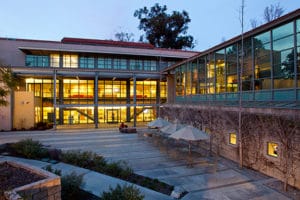
The Drucker Center will serve several functions: training and education in the form of traditional, campus-based and online courses; specialized certificates and executive programs; and forums for conferences, symposiums, seminars, roundtables, and invited speakers. Additionally, the school has plans for the development of case studies and customized research focused on setting priorities, benchmarking, and practice-based applications. The center would also house company-sponsored research and consulting projects, provide job and internship placement, and serve as a clearinghouse for briefings, speeches, journal articles, white papers, podcasts, and webinars.
“The Drucker Center will benefit greatly from CGU’s transdisciplinary focus on research and teaching and its practice-based education methods, and it will take advantage of the full resources of the Claremont Consortium, and beyond,” Crosby said.
The Drucker School and the IEEP will co-host a conference focused on supply chain, logistics, and transportation on September 12, 2014 at the DoubleTree Hotel in Ontario
Industry, economic development, and media sectors continually underscore the need for supply chain expertise and industry support.
When the California Economic Summit—a gathering of more than 450 business, labor, government, and nonprofit leaders from across the state—convened in Los Angeles recently, it recommended Southern California leaders “support goods movement policies and related industries,” and “support the logistics economy.” The Wall Street Journal reported on the growing number of universities introducing MBA concentrations and entire degree programs dedicated to the sector. Corporations such as Dell, Johnson & Johnson, and Panasonic routinely hire graduates from supply chain programs.
“The Drucker School has a role to play in helping supply chain organizations navigate these waters,” Crosby said. “We are ideally and uniquely suited to prepare future supply chain leaders. The issues they will face are as varied as the consumer goods they deliver, and because today’s challenges are not singular or simple, the solutions can’t be either. Our strength has always been in educating managers who create solutions across multiple fields.”
“The supply chain sector faces many challenges, such as the task of making a complex network of production, transportation, and storage more efficient,” said Gary Gaukler, associate professor of management at the Drucker School. “Many issues are operational in nature: What can we do to run this complex network of production, transportation, and storage more efficiently? Tracking shipments and containers in real-time using GPS and RFID [radio frequency identification], for example, can help supply chain organizations become more efficient.”
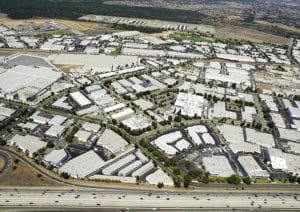
Such issues are highly relevant considering the magnitude of the region’s transportation and warehouse operations. Of Southern California’s major areas for warehouse employment, the top six were Fontana, Moreno Valley, Rialto, Chino, Jurupa Valley, and Perris, according to a 2011 study. For example, the biggest node of Whirlpool’s distribution network is its 1,700,000-square-foot facility in Perris. That’s the size of 31 football fields. And, a major Amazon warehouse fulfillment center is located in San Bernardino, measuring more than a million square feet in capacity.
Making the industry sustainable and green is another challenge, especially in light of the truck traffic the sector generates. Of the top 10 regions of Southern California devoted to transporting goods alone, nearly half of them were in the closely related cities of Bloomington, Fontana, and Jurupa Valley.
“The primary issues are air pollution from truck emissions and water pollution from fuel, oil, and antifreeze,” said Professor Hal Nelson of the School of Social Science, Policy & Evaluation. “Supply chain facilities also raise quality-of-life issues for local residents in the form of increases in traffic and noise pollution.”
There are also broader and more strategic issues. Offshoring and outsourcing were big trends in the 1990s and early 2000s. Now, due to rising fuel prices, increasing foreign labor rates, and other developments, bringing manufacturing back to the United States or to neighboring countries (“re-shoring”) is an emerging new trend. That means increasing economic opportunities, but also increasing environmental and quality-of-life issues for Southern California.
“The university’s and the Drucker School’s unique location and Center of Excellence resources are well suited to help supply chain organizations evolve, improve, and meet the industry’s technological, environmental, economic, educational, and operational goals,” Crosby said. “The Drucker School plans to lead the way in finding solutions and becoming a valued partner to the supply chain community. Just like all the important players in the supply chain industry, we intend to deliver.”
Drucker Executive Education
Encouraging life long learning has always been central to the mission of the Drucker School. Along with its regular degree programs, the school has a strong and growing executive education practice.
Drucker Executive Education believes the answer to effectively training top executives today requires a blend of classic and new learning methods, resulting in a mix that extends beyond the traditional faculty-led, classroom experience. It offers a select array of learning methods, led by top-tier talent from the world of executive education, consulting firms, and industry experts. For each client, Drucker Executive Education customizes the learning experience with action-learning, deep market-immersion experiences, and project-based solutions with their teams, all embedded against the client’s organizational culture and strategy.
While recent clients represent a diverse range of institutions, from financial to medical devices to non-profit, Drucker clients are bound together by a common need to develop their talent so as to execute and lead enterprise-changing initiatives. This is what Drucker calls “the Monday Morning Difference.” For more information, visit the Drucker Executive Education webpage.
Check out an exclusive Flame infographic below on the global impact
of Southern California’s supply chain and logistics sectors:
